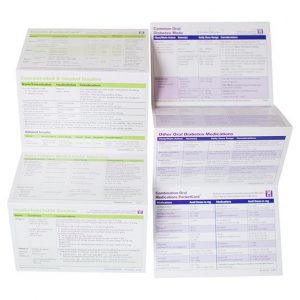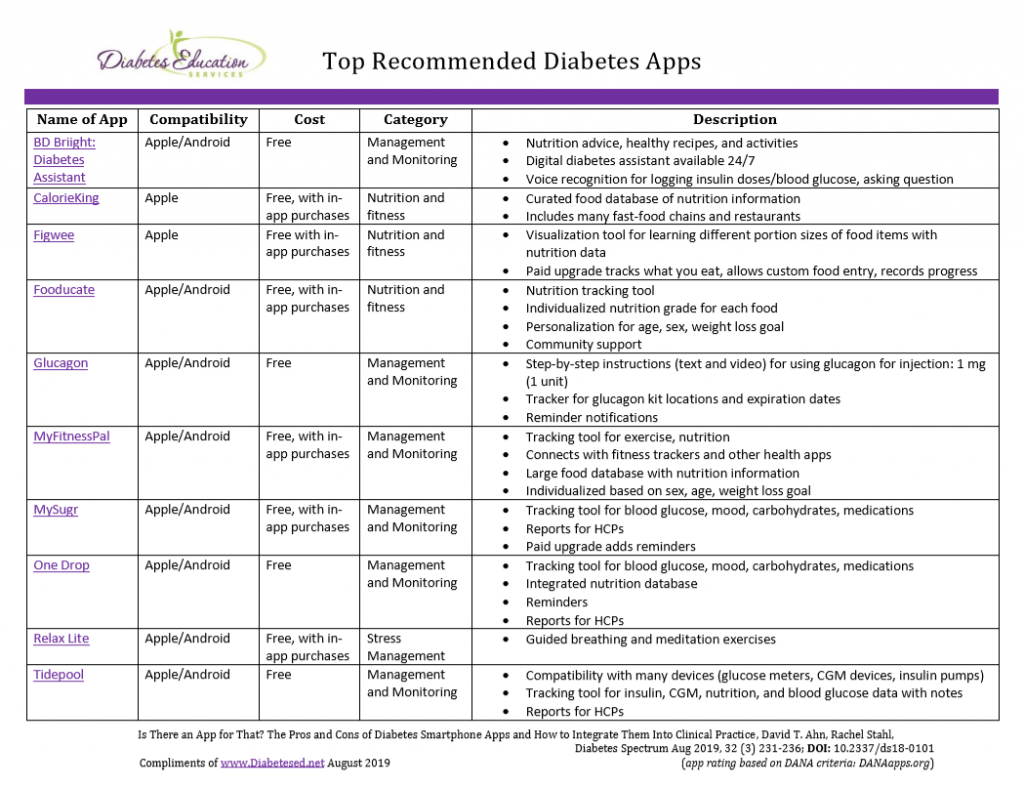Height May Help Predict Type 2 Diabetes Risk
A recent study, analyzing more than 2,600 German adults, showed an association between height and diabetes risk. Specifically, that tall people may have lower risk for developing Type 2, while shorter people may be at increased risk for developing Type 2.

The study showed that for every 10 cm of greater height, the risk for Type 2 was 41% lower for men and 33% lower for women.
Research found that the association between height and risk for type 2 diabetes was a stronger association in people with normal weight, rather than those experiencing overweight or an elevated BMI above 30.
For men and women with normal weight, every 10 cm of greater height lessened the risk of developing Type 2 by 86% in men and 67% in women.
The study suggested that this association between height and Type 2 diabetes risk may be based on healthier cardiometabolic profiles attributable to height.
For full study details, read more on Healio.
Sign up for Diabetes Blog Bytes – we post one daily Blog Byte from Monday to Friday. And of course, Tuesday is our Question of the Week. It’s Informative and FREE! Sign up below!
[yikes-mailchimp form=”1″]Free Resource Friday | Medication PocketCards

FREE Updated PocketCards -Download yours today!
Our digital Injectable Meds PocketCard has been updated in the CDCES Coach App and Online to reflect the FDA’s approval of liraglutide (Victoza) for people age 10 and up with type 2 diabetes.
Our physical PocketCards have also been updated! We have reprinted, so you can have the most up-to-date, laminated, accordion-fold PocketCards, which fold down to approximately 4″x6″. Interested in including our PocketCards on your own website as a resource? Our PocketCards are copyright, but we do sell licenses, so you can post our PocketCards on your website for anywhere from 1-3 years!
Sign up for Diabetes Blog Bytes – we post one daily Blog Byte from Monday to Friday. And of course, Tuesday is our Question of the Week. It’s Informative and FREE! Sign up below!
[yikes-mailchimp form=”1″]Pre-Filled Glucagon Pen Approved by FDA
Xeris Pharmaceuticals new pre-filled glucagon pen, Gvoke, just received FDA’s stamp of approval to treat severely low blood sugar levels in people with diabetes.

The Gvoke glucagon pen is filled with a liquid stable form of glucagon and is approved for use in people with diabetes, age 2 and above. Xeris will have the pre-filled syringe version available in 4-6 weeks and the auto-injector version available in 2020.
The Xeris glucagon pen was created to simplify glucagon injections. This new Gvoke pen does not require any mixing, since it is filled with liquid stable glucagon.
Availability of a glucagon delivery device is critical to treat severe hypoglycemia and prevent serious consequences of untreated severe hypoglycemia such as cardiovascular events, seizure, coma, or even death.
Read more about the Gvoke Glucagon Pen and auto-injector here .
Sign up for Diabetes Blog Bytes – we post one daily Blog Byte from Monday to Friday. And of course, Tuesday is our Question of the Week. It’s Informative and FREE! Sign up below!
[yikes-mailchimp form=”1″]Mindful Monday | On Mothering Diabetes: A Poem
Happy Mindful Monday! Below we highlight a beautiful poem by Liezel Graham who has a son living with type 1 diabetes.

In my fridge,
in the shelf that is designed
to hold cheese,
there are vials of hope,
and an emergency kit
in bright orange,
remember, remember
in case you forget
how to breathe,
with pre-filled hormone,
so that when my fingers
fumble with fear
I have a needle
ready
to plunge deep into muscle,
to bring you back
if you should ever slip
too far away
from me.
I keep nocturnal vigils with foxes
and
other moon mothers
who have to keep on keeping on,
until
the
day
breaks
fresh
hope
over
me,
and how tired can a mother
be and still breathe?
I punch a calculator in my head
with every meal,
and
I sing songs of
no, you cannot eat that now
and please,
you must drink this now,
or else…
and in this home we know needles, and
we
know
fear,
and we are the ones with
a yellow sharps container
on our kitchen counter
where
others
have no such things, and
we are intimately familiar
with the fear
that
can
slip
into
a word,
hypo
hyper
ketones
coma
death.
but, I also know this hope that lives in delicate glass vials,
where every drop
holds life
yours,
and also my heart, and
I promise you
that cells might forget
how to keep
you alive,
but I will not forget,
or
give up,
ever.
and
for you,
and for life,
I am grateful.
— on mothering diabetes.
Sign up for Diabetes Blog Bytes – we post one daily Blog Byte from Monday to Friday. And of course, Tuesday is our Question of the Week. It’s Informative and FREE! Sign up below!
[yikes-mailchimp form=”1″]Free Resource Friday | Top Recommended Diabetes Apps
We are excited to share a list of highly-rated diabetes apps that help build bridges between people living with diabetes and technology. These apps have excellent functionality and user interface drive, according to an extensive review by the technology experts at AADE. Feel free to share these apps with our diabetes community and when you have a minute, take them for a test drive yourself. Each app offers something unique and helpful for different individuals. See what you think!
CDCES® Coach App – FREE for Diabetes Health Care Professionals
Our CDCES Coach App has passed DANA’s (Diabetes Advanced Network Access) most extensive review and received the mWellth certification, including DANA’s stamp of excellence for functionality!

Want to learn more about Diabetes Technology?
Enroll in our Technology Toolkit.

When it comes to insulin pumps, sensors, and calculations, many of us feel overwhelmed and unsure about diabetes technology management.
For those who want to feel more comfortable with diabetes technology, Coach Beverly has created a 2-part Technology Toolkit to provide you with critical information on insulin pumps, calculations, and continuous glucose monitors (CGMs).
Sign up for Diabetes Blog Bytes – we post one daily Blog Byte from Monday to Friday. And of course, Tuesday is our Question of the Week. It’s Informative and FREE! Sign up below!
[yikes-mailchimp form=”1″]Nordic Diet – Better than Mediterranean?
Developed in tandem by scientists, nutritionists, and chefs, the Nordic diet was designed to enhance the nutritional intake of people in Scandinavian Countries. The Nordic diet is similar to the Mediterranean diet in that it promotes healthy lifestyle habits like choosing local, fresh ingredients and pairing diet with active habits like bicycling and walking.
The Nordic diet’s aim is to limit sugar and highly processed foods while emphasizing whole and minimally processed foods; high-fiber vegetables, whole grains, fruit, dense breads (pumpernickel/real sourdough), fish, low-fat dairy, lean meats of all types, beans and lentils, tofu, skinless poultry, and fermented foods.
The Nordic Diet ratio recommends 50% of calories from high fiber carbs, 25% lean protein, and 25% from mostly plant based fats. Fermented foods — fish, vegetables and dairy — also play a strong role, as do herbs and spices
A caveat is if you live in a warmer climate, some of the Nordic foods may be difficult to find, so the Mediterranean diet may be better. Also, registered dietitian Layne Lieberman advises limiting cured fish which is high in salt, sugar, and often nitrates. Read more about the Nordic diet here.
Sign up for Diabetes Blog Bytes – we post one daily Blog Byte from Monday to Friday. And of course, Tuesday is our Question of the Week. It’s Informative and FREE! Sign up below!
[yikes-mailchimp form=”1″]Technology & Diabetes Today | September Newsletter
September Newsletter Now Available!
In our September Newsletter we highlight a string of new technology developments! From pump recalls and treatment decisions, to technology events and solutions.

Read this month’s newsletter to find out more about our latest technology toolkit, and can’t-miss events like the Women Leader’s Conference coming to the East Coast!
September Newsletter Topics Include:
- Time in Range Goals for CGMs
- Medtronic Pump Recall
- EverSense Approved for Treatment
- Women Leader’s Conference to include Technology Session
Want to learn more about Diabetes Technologies? Coach Beverly’s New Technology Toolkit – Earn 3.0 CEs is ready for on-demand viewing. Next Live Show: September 11 & 13, 2019 @ 11:30 a.m.
When it comes to insulin pumps, sensors and calculation, many of us feel overwhelmed and unsure about diabetes technology management. Plus, with the vast amount of information, it may seem impossible to figure out what to focus on for our clinical practice and to prepare for the diabetes certification exam.
Coach Beverly invites you to enroll in our NEW Technology Toolkit Online Course Bundle, to keep you abreast of the rapidly changing world of Insulin Pump Therapy, Continuous Glucose Monitoring and calculations while preparing for exam success.
If you want cutting edge information on diabetes technology, problem solving and using formulas to determine appropriate insulin dosing, we highly recommend this toolkit.
Sign up for Diabetes Blog Bytes – we post one daily Blog Byte from Monday to Friday. And of course, Tuesday is our Question of the Week. It’s Informative and FREE! Sign up below!
[yikes-mailchimp form=”1″]Smart Glucometers Improve Engagment During Pregnancy
A clinic in South Carolina studied 50 pregnant women with type 1 or type 2 diabetes and found that use of smart glucometers improved diabetes management. Use of these glucose meters led to increased participant engagement and better informed treatment decisions.

The smart glucometers were cellular-enabled to upload readings in real time to the clinic’s online portal. The smart meters also reported time of day, type of meal eaten, physical activity information, and symptoms. Blood glucose readings taken with the smart meter were automatically uploaded to a patient portal via cellular connectivity and were reviewed daily by diabetes educators.
During the study providers contacted participants when blood glucose readings were less than 50 mg/dL or when there were two consecutive readings of more than 200 mg/dL. They found that women with the smart meter reported more hypoglycemic events and were more likely to use a CGM than those who kept manual log books.
Those with smart glucometers versus those without had no difference in maternal or neonatal complications, except for neonatal hypoglycemia, which was less frequent in those with smart glucometers. For more details, you can read the full study.
Want to learn more about Diabetes Technologies? Coach Beverly’s New Technology Toolkit – Earn 3.0 CEs is ready for on-demand viewing.
When it comes to insulin pumps, sensors and calculation, many of us feel overwhelmed and unsure about diabetes technology management. Plus, with the vast amount of information, it may seem impossible to figure out what to focus on for our clinical practice and to prepare for the diabetes certification exam.

Coach Beverly invites you to enroll in our NEW Technology Toolkit Online Course Bundle, to keep you abreast of the rapidly changing world of Insulin Pump Therapy, Continuous Glucose Monitoring and calculations while preparing for exam success.
If you want cutting edge information on diabetes technology, problem solving and using formulas to determine appropriate insulin dosing, we highly recommend this toolkit.
Sign up for Diabetes Blog Bytes – we post one daily Blog Byte from Monday to Friday. And of course, Tuesday is our Question of the Week. It’s Informative and FREE! Sign up below!
[yikes-mailchimp form=”1″]








